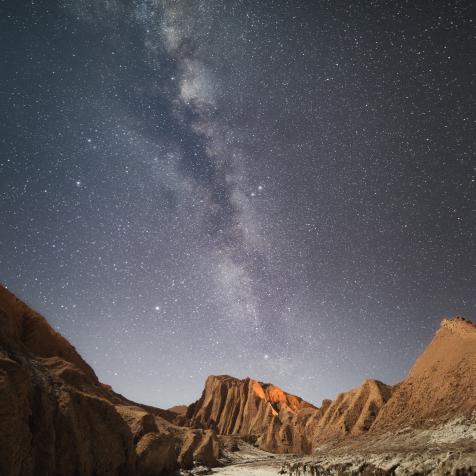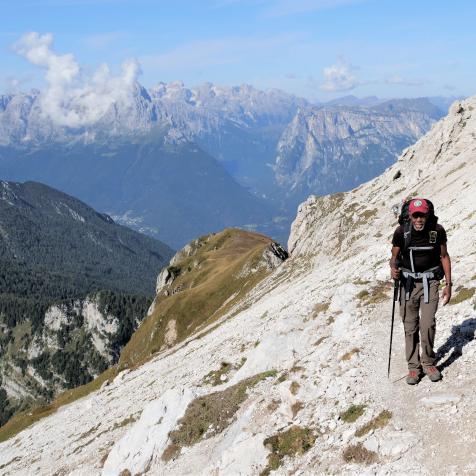
Female Firsts: Meet Dr. Kathy Sullivan
In honor of Women's History Month, we're celebrating the achievements of women around the globe and throughout history. From the pages of The Explorers Journal, we're sharing stories from four women who broke boundaries in exploration, research, and science. In our final spotlight, meet the first American woman to walk in space and to reach the deepest known point in the ocean, Dr. Kathy Sullivan.
Dr. Kathy Sullivan is a hybrid explorer with an awesome legacy as an oceanographer, astronaut, and author. She has helped design and deploy the Hubble Telescope, and then moved from NASA to the National Oceanic and Atmospheric Administration (NOAA), becoming their first female Administrator. Dr. Sullivan has also served as Under Secretary for Oceans and Atmosphere during the Obama administration, and in 2020, she became the first person to reach the bottom of the Marianas Trench, earning her a Guinness World Record for being the first person to travel to space and the deepest point on Earth. Check out Dr. Sullivan's reflections from her historic 35,810-foot dive to the Challenger Deep.

NASA on The Commons
(April 25, 1990) STS-31 Mission Specialist Kathryn D. Sullivan poses for a picture before donning her space suit and extravehicular mobility unit in the airlock of Discovery. Onboard the April 25, 1990 shuttle mission that deployed the Hubble Space Telescope, Sullivan remained ready to do a spacewalk in case there were problems putting the orbital observatory into space. The deployment went smoothly, and no spacewalk was necessary.
As I descended into the Marianas Trench in underwater explorer Victor Vescovo's "Limiting Factor" sub, my mind was continually flipping back and forth between space flight experiences and deep submersible experiences, what's similar and what's different. The most similar thing is that a spacecraft and a submersible are like magic school buses. They are brilliantly engineered contraptions that let you go someplace that otherwise you could not visit.

Going down in the deep sea is very serene. You're sitting in a small seat---but not as cramped as an economy airline seat. There are dials, instrumentation, and control panels all around you. It's pretty quiet, just a bit of fan noise. It's like a four-hour-long elevator ride, gently descending through the water column, about one mile an hour. It gets chillier and chillier inside the submersible because the water is basically at freezing temperatures; and that cold seeps through the metal of the sphere you are inside. So you put on a heavier sweater.

Enrique Alvarez
You make a radio call up to the surface every fifteen minutes to check in, and to be sure you still have good communications. Victor Vescovo and I ate lunch at about 33,000 feet below sea level---breaking out the tuna fish sandwiches and potato chips, followed by apple strudel made by a delightful Austrian chef who is part of the team.

Enrique Alvarez
It's dark outside. We left the lights off because we wanted to save all our battery power for our time on the bottom, mapping the sea floor. If we had left the outside lights on as we descended, we wouldn't have had much bottom time. So we made the choice to travel in the dark.
Get to Know the First Women of The Explorers Club 24 Photos
Today there are more than 800 female members of The Explorers Club. Forty years ago, in the spring of 1981, there were none. But efforts were underway to change that. The big announcement was made at the Annual Dinner; and a few months later, five women were elected as members. More were elected later in the fall; and by the end of the year, there were 16 women members of The Explorers Club. All had pushed their bold dreams into solid field research. Check out these images from some of the extraordinary expeditions and accomplishments of these female explorers and iconic Explorers Club members Dr. Sylvia Earle, Kathy Sullivan, Carol Beckwith, and Anna Roosevelt.
As part of Women's Month, don't miss the world premiere of PATHFINDERS: First Women of The Explorers Club, an inside look at the early history of the first women to become members of The Explorers Club.
Legendary marine biologist Sylvia Earle guides us into the deep ocean; archaeologist Anna Roosevelt shares new discoveries about human evolution in Amazonia and the Congo Basin; photojournalist Carol Beckwith illustrates the marvels of Africa’s diverse cultures; and astronaut/oceanographer Kathryn Sullivan shows us the world from outer space and from the deepest point on Earth, the Mariana Trench. Be sure to stick around for a live Q&A with all four women following the film screening!
Stream live on explorers.org, The Explorers Club YouTube channel, and their Facebook Live - Tuesday, March 30 at 7:00 pm EST.




















